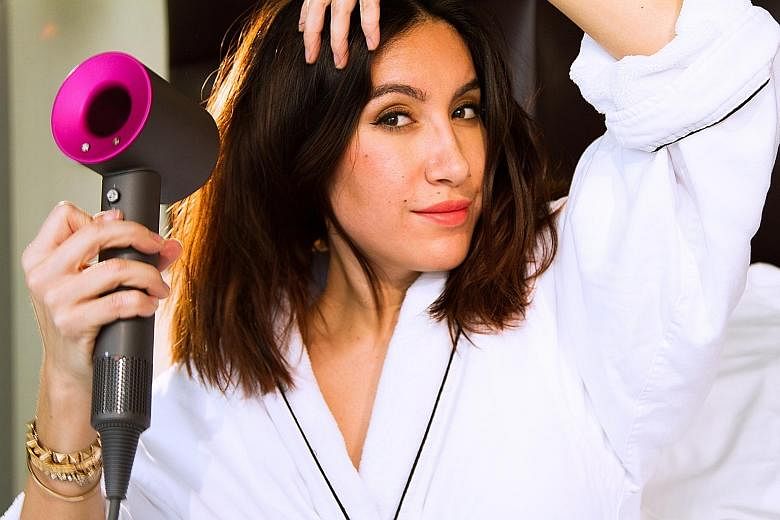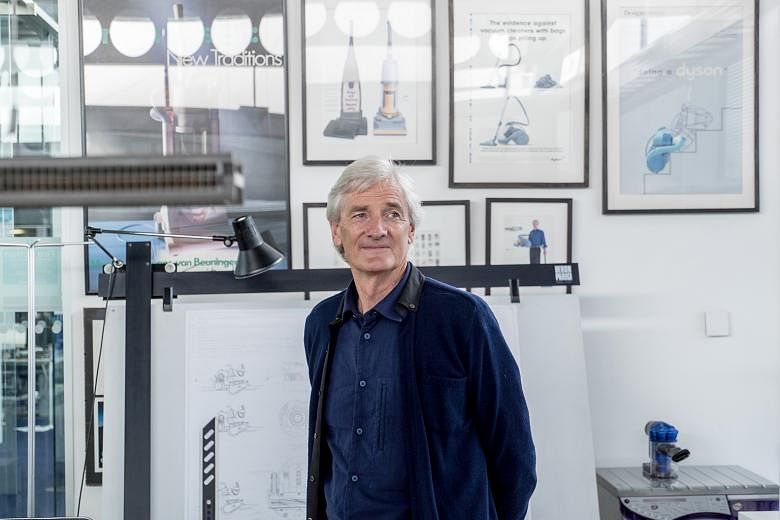WILTSHIRE, ENGLAND • British designer and engineer James Dyson, sporting sneakers, cobalt- blue spectacles and a voluminous thatch of silvery hair, stood in his vast glass office in the depths of the English countryside one recent Tuesday afternoon.
He was clutching a device that he contends could change the monotony of bathroom routines forever.
"There has been zero innovation in this market for over 60 years," said the 68-year-old billionaire, who was knighted by Queen Elizabeth II in 2006.
"Millions of people use contraptions daily that are hideously inefficient, waste their time and are causing them long-term damage.
"We realised that we could - and should - sort this situation out."
He triumphantly held up what appeared to be a sleek black-and- pink plastic doughnut on a stick. "Four years, 100 odd patents and 600 prototypes later, I think we might have found the answer."
Known as the Dyson Supersonic and unveiled in Tokyo on Wednesday, the device is his response to a question many never thought to ask: Is it possible to make a better hair dryer?
This may not seem like a big deal. A few burnt scalps and frizz issues aside, people have been doing just fine with the standard hair dryer for decades.
But, as Japanese fashion designer Dai Fujiwara, who collaborated with Sir James on an Issey Miyake runway presentation, wrote in an e-mail: "Because everyday life is too common, people rarely realise there is a problem."
About 92 per cent of British women regularly use a hair dryer (according to the consultancy Mintel), while 75.5 per cent of all women and 24.5 per cent of men in the United States and 97 per cent of women and 30 per cent of men in Japan use one (according to Sir James).
Most spend about 20 minutes on each session. So changing even a small percentage of that behaviour could have outsize effects.
Sir James, Britain's best-known living inventor, is the Steve Jobs of domestic appliances. He has built a fortune from making otherwise standard products seem aesthetically desirable, in the process persuading untold numbers of consumers that they really want cordless and bagless vacuum cleaners, bladeless fans and household robots.
He said 103 engineers were involved in the creation of the Supersonic, which included the taming of more than 1.6km of human hair tresses and 7,000 acoustic tests as teams tackled three issues: noise, weight and speed.
Ground zero for the project was the Dyson research facility, a Willy Wonka-like world deep in the rolling Wiltshire hills, with a Harrier fighter jet and spliced Mini car in the visitors' parking lot.
Projects are kept under lock and key from virtually all outsiders - as well as many within the walls itself.
Mr Ed Shelton, a design manager for the Supersonic, said: "It was the hardest project I've worked on. Beyond having to crack the science of hair, we've had to tackle a highly subjective user psychology.
"There are many more approaches and angles to blow-drying than vacuuming in the world. British women want volume. Japanese women want straightness. No one wants hair damage. And then we had to create a fleet of robots specifically to test that over and over again."
The company says the key to the Supersonic is its high-speed 13-blade motor. About the size of a small coin, the motor is small enough to fit in the base of the hair dryer handle, rather than in the conventional motor position at the top of the device, a shift that creates its unorthodox streamlined aesthetic.
The smaller motor allows for high velocity flow but not pressure, the company says, which is how temperatures shoot up on traditional hair dryers and users burn themselves if the dryer is too close to the head.
The company says the positioning of the motor in the hand also limits the so-called dumbbell effect of old-guard models, where top- heavy weighting can cause arms to ache. Weighing just 370g, the new structure allows for a longer silencer tube and smaller fan, cutting down on noise.
It also has magnetic heatproof nozzles and intelligent heat sensors to prevent hair burn.
"Frankly, I'm rather terrified," Sir James said. "We had to learn a great deal with the Supersonic and there have been a lot of firsts on all fronts, including the fact that I had to grow my hair especially for a launch. It hasn't been this long since my 1960s student days when I wore flowered shirts and flares."
The investment, including a state- of-the-art hair laboratory, reached €50 million (S$76.1 million).
As a result, the Supersonic will retail at US$399 (S$536) when it arrives in the US at Sephora stores in September. Hair dryers sold by Amazon in the US retail for US$12.99 to US$219.98.
NEW YORK TIMES


